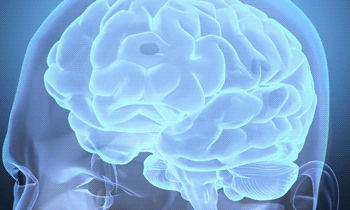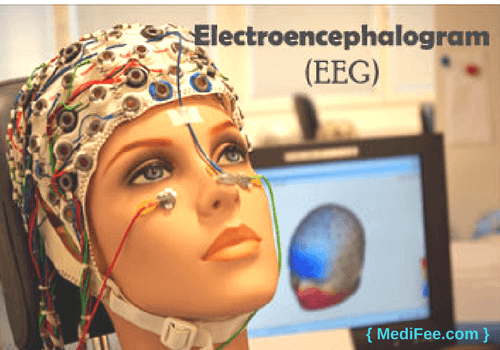Brain Mapping
Listed below is the step by step procedure of brain mapping:
- What is Brain Mapping ?
- Why is Brain Mapping Required?
- Pre-operative Preparation
- Day Before Surgery
- Procedure Day
- Methods/Techniques of Brain Mapping
- Post Procedure
- Risks and Complications
What is Brain Mapping ?
Brain mapping is a technique used for identification of various parts and their functions in the brain in a similar way as we use road map for finding different ways. It is a bit complex process just like many other things related to the brain. Brain mapping is study of anatomy and function of the brain and spinal cord.

Why is Brain Mapping Required?
According to scientists, the brain acts like the internet. At this very moment, out brain is having many neurons just like the internet having many pages of content. Science has advanced to the level, where we are aware of the things about the brain which were unknown before. Still there are many mysteries about the brain which need to be resolved. Thousands of paths can be created when the neurons in the brain get linked up. Not all of these paths are predictable. This is where creation of map of the brain comes into the picture. For predicting condition of the brain along with injuries and brain-related issues such as autism or epilepsy, brain mapping is carried out.
Brain mapping process helps in getting a basic understanding of brain anatomy. Differentiation between prefrontal cortex and primary motor cortex can be done with the help of brain mapping. As per new studies in brain mapping, the brain is found to be plastic i.e., changeable. An intelligence quotient (IQ) was considered non changeable previously which is not true as per advanced brain mapping studies. Some scientists have a belief that identification of the brain areas responsible for mental disorders, such as schizophrenia, bipolar disorder and depression can be done with the help of the brain mapping.
Given below are the conditions where brain mapping surgery is required.
- Brain tumors
- Vision problems
- Epilepsy
- Glaucoma
- Optic nerve atrophy
- Cerebral aneurysms
Pre-operative Preparations
Patients will be given instructions by the surgeon prior to the process of brain mapping. Some patients may feel anxious about the process. To help them relax, psychotherapy or counseling can be used. This helps in reducing their fear and anxiety and helps in early recovery. Prior to few days of mapping of the brain, patients need to quit smoking as well as alcohol consumption. Medications which can interfere with the brain mapping need to be stopped. Patients need to inform the surgeon about their medications so that drug interactions and complications can be avoided.
Blood tests to determine white cell count, blood sugar levels, renal function , liver function should be done. Any abnormality in the results of these tests must be corrected prior to surgery. An ECG will help to assess cardiac function. Sometimes, the neurosurgeon might advuse the patient to undergo and EEG prior to brain mapping, to pre-determine any possible obstacle in the course of the procedure
Day Before Surgery
A day before surgery, all medical records of the patients need to be organized. Record of patient's history is also kept handy. Having all the information about patients makes it easy during the surgical process. It reduces the complications during and after surgery. Hair on the head need to be shaved prior to the brain mapping.
Procedure Day
The process of brain mapping is carried out under general anesthesia. Test for anesthesia is carried out prior to actual infusion to avoid complications.
Methods/Techniques of Brain Mapping
Mapping of brain electrically for the guidance of epilepsy surgery or tumor can be done in a two step process in general or during the surgery.
Brain mapping is carried out during any type of surgery which involves exposure to the brain parts. This type of mapping is called as an intra-operative brain mapping since it is carried out during an operation process.
With the help of a small electrical probe, testing of various locations on the surface of brain is carried out by the surgeon one after the other. This helps in creating the functional map of the brain area. Testing of any number of locations can be done by this method. During this mapping process, areas where movements are involved can be identified during unconscious condition of the patient. In this kind of mapping, areas with movement can be identified electrically even if the patient is under anesthesia.
Given below is the information about the tools used in brain mapping. These are useful for collection of brain images.
- Computer Axial Tomography (CAT) Scan: During CAT scan, X-rays of the brain from many angles are taken for determination of structural abnormalities.
- Structural magnetic resonance imaging: During this imaging method, images of the brain can be collected with the help of water in the brain and the resolution of images is comparatively better than CAT scan.
- Diffusion Tensor-MRI (DTI): DTI is a tool in which imaging of “tracts†of neurons is carried out. These neurons act as a connecting link between brain regions by following movements of water in the brain.
Examination of the brain activity is carried out by following techniques.
- Electroencephalography (EEG):
Using EEG technique, electrical activity in the brain is recorded.

- CPositron emission tomography (PET): Images of radioactive markers in the brain can be taken by PET technique.
- Functional MRI (fMRI): Activity of the brain can be seen in the images obtained by fMRI when subject carries out different tasks.
- Pharmacological Functional MRI (phMRI): Activity of the brain can be checked with the help of Pharmacological functional MRI after administration of drugs.
- Transcranial Magnetic Stimulation (TMS): During this stimulation technique, parts of the brain are stimulated for triggering certain behaviors.
Post Procedure
After surgical process, patient is moved to recovery room. Once the effect of anesthesia is reduced, patient needs to be monitored by the surgeon. All instructions given by the surgeon need to be followed by the patients.
Risks and Complications
Brain mapping being a critical surgical process where brain is exposed, has some risks associated with it. Here is the list of risks involved in brain mapping process.
- Seizures
- Pain during electrical stimulation
- Tingling sensation during application of current

